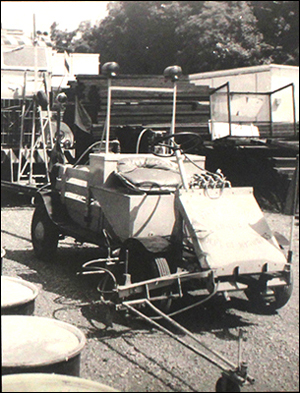
August 20, 2014
Did You Know?

Millions of drivers each day drive by them without paying much notice. The solid white line that follows the edge of the right might seem obvious, but the innovation that made that side line possible eventually improved safety and changed how people navigate the nation’s roads.
Last week the Ohio Department of Transportation's celebrated and recognized John Edward White, Sr., the inventor of the first-ever edge line machine in 1956. His invention improved safety on our nation's roads and set a standard that we use nation-wide today.
"Today we not only recognize Mr. White's contribution to the world of transportations safety, but acknowledge his pioneering spirit which continues on today in ODOT District 10," said ODOT District 10 Deputy Director Steve Williams, P.E. in a statement.
According to ODOT, White was traveling down State Route 60 in 1956 and found that he could barely see the road during an intense fog. White was with his family in the car on their way to Detroit, and safety was of the upmost importance. He used the center median line for visual guidance, but had to drive with his head out the window to see through the fog.
After his trip, White devised the concept for lines on the side of the road. White and a fellow ODOT employee named James Science used a paint spraying machine to demonstrate the idea. The first edge line was placed on State Route 550 south of Marietta, Ohio.
White eventually further developed the concept, building the first-ever edge line machine using the body of a Crosley car. The machine worked in conjunction with an ODOT centerline truck to efficiently paint the center line and edge lines simultaneously.
White's innovative solution to improve safety on roads was adopted by other states – and eventually edge lines were added to two-lane rural roads and modern highways.
In 1961, AASHTO released an updated Manual on Uniform Traffic Control Devices that for the first time illustrated and recommended the use of the edge line.
Mr. White retired in 1979 after 33 years of service at ODOT, and passed away in 1980. As tribute to his innovative edge line, a display created by his son David will travel throughout the state making stops at various rest areas. Currently the display will reside at the Washington County rest area on Interstate 77 northbound until October.
As ODOT’s news release points out, “His story goes to prove that the simplest ideas can make the greatest impact.”












